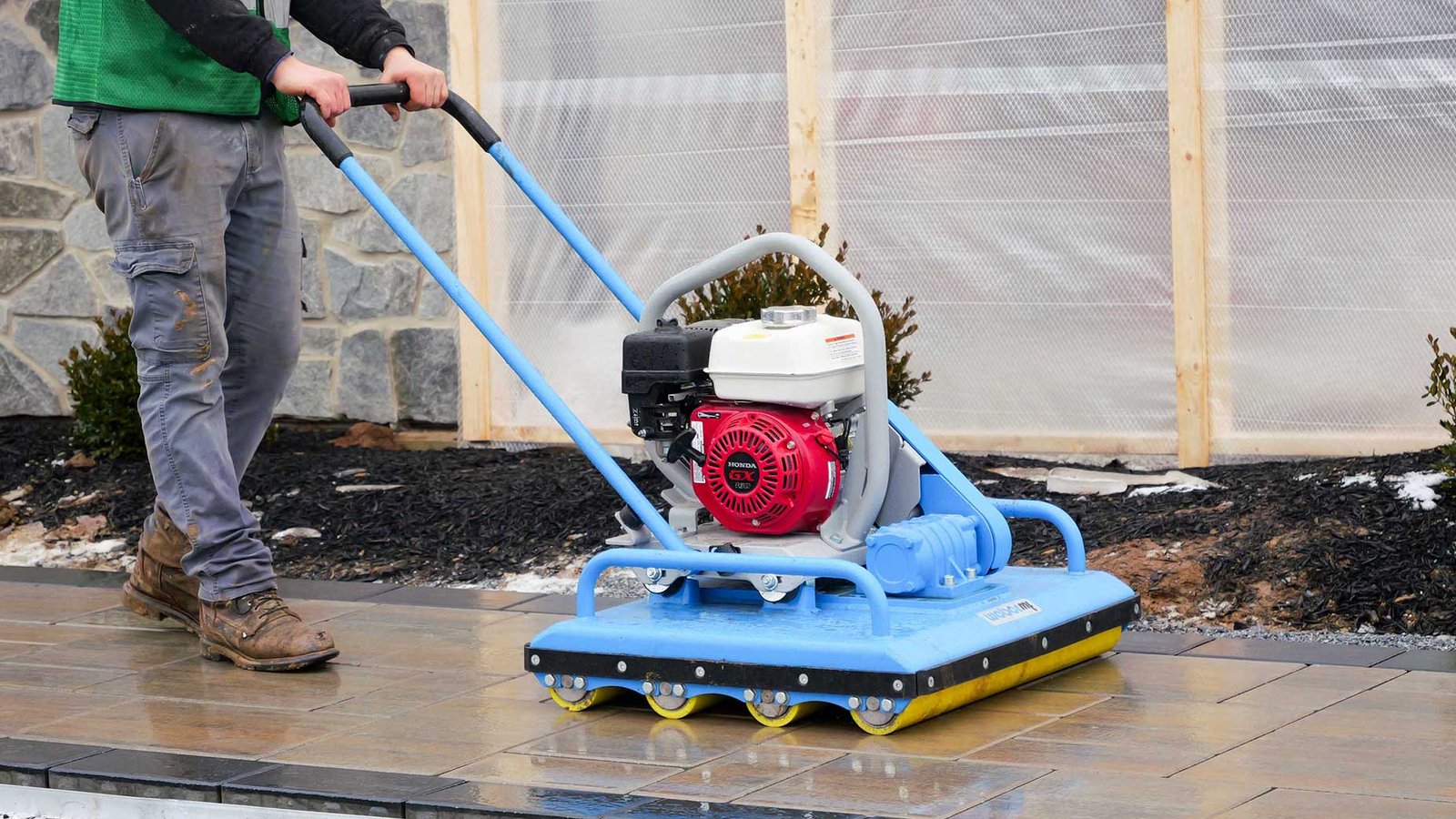Hiring a plate compactor can be a game-changer for construction, landscaping, or renovation projects. It helps achieve solid and stable foundations by efficiently compacting soil, gravel, and asphalt. However, understanding what to consider when hiring a plate compactor is essential for ensuring you get the right equipment for your needs. This guide will walk you through the key factors to consider, ensuring a successful rental experience.
Essentials of Ground Compactors
Ground compactors are crucial for stabilizing soil before laying foundations or pavements, preventing shifts over time. They vary in design to suit different terrains and material types. Selecting an effective ground compactor ensures thorough compression and project success. These tools are a staple in construction for their ability to create firm, even bases.
Understanding Plate Compactors
Before diving into the hiring process, it’s important to understand what a plate compactor is and how it works. A plate compactor is a heavy, flat device that uses vibration to compact soil and other materials. It’s designed to provide a stable and level base for paving, landscaping, and construction.
Types of Plate Compactors
- Single Direction Compactors: These compactors move forward only and are ideal for larger areas.
- Reversible Compactors: Capable of moving both forward and backward, these are great for tight spaces and trench work.
- Electric Compactors: Suitable for indoor use, these models are quieter and produce no emissions, but may lack power compared to gas models.
Assessing Your Project Needs
Before hiring a plate compactor, evaluate your specific project requirements:
1. Material Type
Determine the type of material you will be compacting. Different materials may require different types of compactors. For example, cohesive soils like clay may need a heavier model, while granular materials like sand may require a lighter option.
2. Compaction Depth
Consider the depth of compaction required for your project. If you need to compact deeper layers, ensure that the compactor you hire is capable of achieving the necessary depth effectively.
3. Site Conditions
Assess the conditions of the site. If the area is uneven or has obstacles, a reversible compactor may be more suitable for maneuverability. Conversely, for larger and open spaces, a single-direction model may be more efficient.
Choosing the Right Equipment
When hiring a plate compactor, consider the following:
1. Plate Size and Weight
The size and weight of the plate compactor significantly impact its performance. A larger plate allows for faster compaction over a broader area, while a smaller plate is better suited for confined spaces. Heavier compactors exert more force, resulting in better compaction, but can be harder to maneuver.
2. Engine Power
Evaluate the engine power of the compactor. Most compactors come with either gas or diesel engines. Gas engines are usually more portable, while diesel engines offer higher power for larger jobs. Consider your project requirements when choosing the engine type.
3. Vibration Frequency
The vibration frequency of a compactor affects its efficiency. Higher frequencies work better for granular materials, while lower frequencies are more effective for cohesive soils. Ensure the compactor you choose matches the materials you will be working with.
Rental Process
1. Research Rental Companies
Start by researching local rental companies that offer plate compactors. Look for reputable providers with positive customer reviews. Check their inventory and ensure they have the type of compactor you need.
2. Compare Prices and Terms
Once you’ve identified potential rental companies, compare their prices and rental terms. Some companies may offer daily, weekly, or monthly rates. Be sure to ask about any additional fees, such as delivery costs or damage waivers.
3. Inspect the Equipment
Before finalizing your rental, inspect the plate compactor to ensure it’s in good working condition. Check for any signs of wear and tear, and ensure all components are functioning correctly. Don’t hesitate to ask the rental company about maintenance records.
Safety Considerations
When using a plate compactor, safety should always be a priority:
1. Personal Protective Equipment (PPE)
Always wear appropriate PPE, including safety goggles, ear protection, gloves, and steel-toed boots. This will help protect you from potential hazards during operation.
2. Follow Operating Instructions
Make sure to read and understand the operating manual before use. Familiarize yourself with the controls and safety features of the compactor to ensure safe and efficient operation.
Conclusion
Hiring a plate compactor for your next project can significantly enhance the quality of your work, providing a stable foundation for various applications. By understanding your project needs, carefully selecting the right equipment, and following safety protocols, you can ensure a successful rental experience. Whether you’re a seasoned professional or a DIY enthusiast, taking the time to choose the right plate compactor will lead to better results and a smoother project flow.

